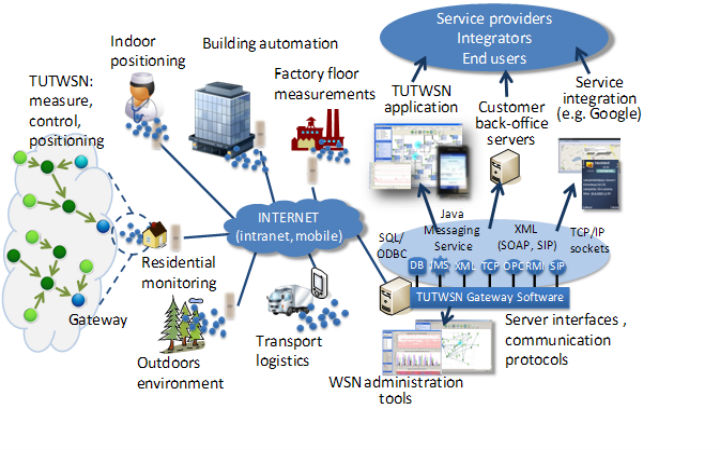Wireless Sensor networks projects.
Wireless sensor networks projects deploy in fruitful way for various real time applications in large networks. Large numbers of sensor nodes are composed in a network referred as sensor network. Sensing communication is provided in a sensor network. A group of sensing devices that provides communication by wireless for the purpose of monitoring or transmitting an application is wireless sensor network. Low-cost is requested to implement WSN. Wireless sensor network projects are launched for effective communication among nodes to carry out activities. A group of dispersed sensors are implied to carry out process as record and monitor environment condition. Sensor network refers to network that contains different sink, actuators, sensor nodes for communication. In wireless sensor network the information is passed by multihop relay and reaches sink. Sink is located inside WSN. Nodes are always in motion which there is a periodic record of the location.
Requirements of WSN Projects.
Lifetime: From environment nodes are battery powered and energy is scavenged. For full lifetime network is hard to be maintained.
Real time: For the purpose of processing, sensing and communication media strict timing constraints are maintained. Real world has a close connection to WSN.
Scalability: Large numbers of nodes are contained in WSN. High densities are provided by the protocols used in Wireless sensor networks projects.
Fault tolerance: Dynamically in failure of nodes, network function must be maintained.
Production cost: If any nodes runs out of battery and it could be replaced by other node. As the network is covered by large number of nodes deployment occurs while cost of node is low.

Security: Health care and military purpose security communication must be improved. Data’s are transmitted with confidential or private information.
Features of Wireless sensor networks :
Nature of dynamic: Every node communication links are unstable due to mobility, node errors and interference of environment.
Communication: Communication to target nodes is provides for the specified location.
Density: High density is assured to large node number.
Constraint resources: WSN node physical size is small and battery powered it indicates that computation, communication and memory utilized by a node is limited.
Specific application: To a specific task WSN is deployed.
Deployment: Randomly node deployment actions are performed; difficulties are faced in replacement and maintenance.
Objectives of the wireless sensor network projects.
- Providing scalability.
- Giving adaptability.
- Offer reliability.
- Low node cost low power consumption.
- Qos support.
- Providing security.
- Enabling fault tolerance system.
- Effective communication channel utilization.
Characteristics of Wireless Sensor Network.
- Redundant data acquisition.
- Power constraints.
- Limited battery life for wireless node.
- Cycle process low & multiple flows.
Roles in Wireless Sensor Network (WSN):
Sink: A part of WSN is SINK or PDA’s external device, gateway.
Source: Source carries out the following operation, Measuring data and transmitting to typical device. with actual sensors.
Actuator: Some devices based on data transmission are controlled by actuators that at times sink.
Development platform of Wireless network sensors Projects.
- Sensorial Corporation.
- Ember corporation.
- World sens.
- Ember corporation
- Dust networks.
Applications of wireless sensor networks Projects.
- Military.
- Automated and smart homes.
- Health.
- Habitat and Ecosystem Monitoring.
- Seismic Monitoring.
- Air traffic control.
- Rapid emergency response.
- Traffic monitoring.
- Robot control.
- Automated Building Climate Control.
- Many other consumer and industrial areas.
- Monitor server overflow process
- Meteorological research helps in data tracing.
- To analyze condition, bridges are monitored.
- Environment condition and wildlife behavior are monitored.
- To measure various functions/activities in medical application it is used.

